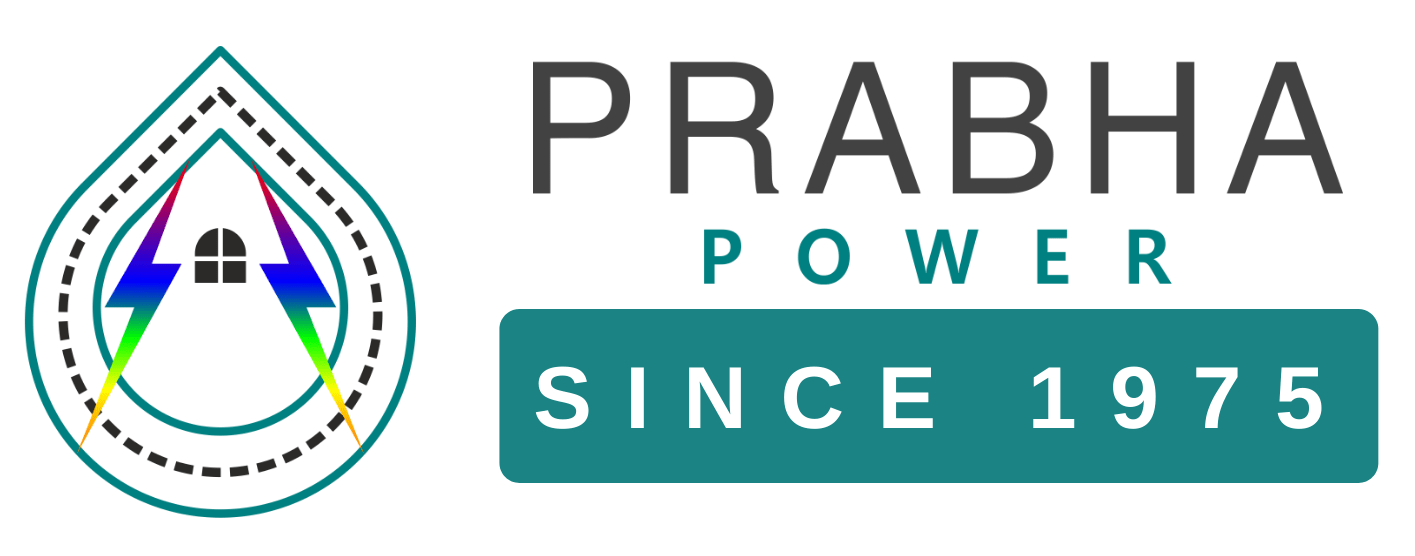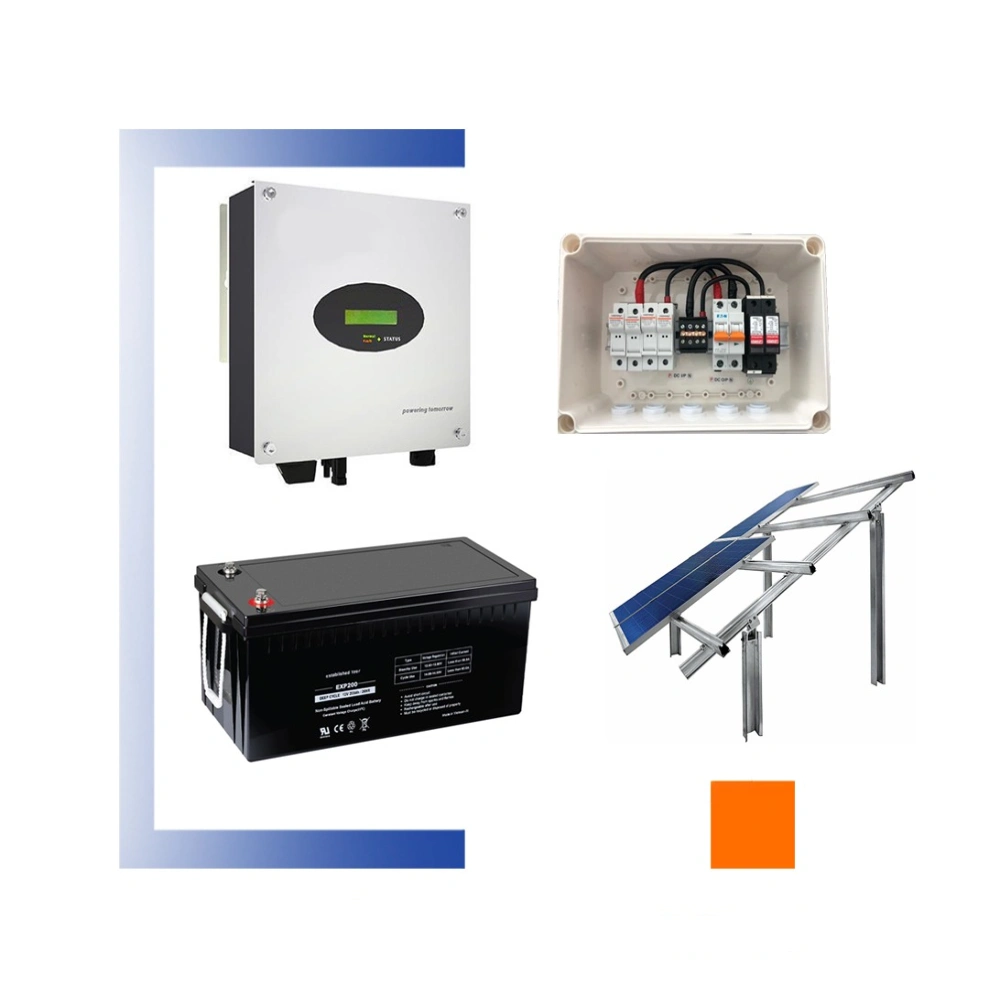Rooftop Solar Panels: Types, Benefits, Installations & Costs
Are you ready to unlock the incredible potential of rooftop solar panels and harness the boundless power of the sun? Solar energy is nature’s gift to us – the most accessible, eco-friendly, and abundant source of power on our planet. Amazingly, just one hour of harnessed solar energy can fulfil the energy needs of an entire country’s population for an entire year!
Thanks to remarkable technological advancements, we now can capture this solar energy in a cost-effective and highly efficient manner. However, finding adequate space for traditional solar panel installations can often be a challenge, especially in urban areas with limited land availability.
Rooftop solar panels offer a brilliant solution to space constraints by utilizing the idle roof space of commercial, industrial, and residential buildings. More and more people are turning to these innovative systems to power their homes and businesses due to decreasing costs. In this blog post, we’ll discuss the types of rooftop solar panels, their benefits, the installation process, and the associated costs. Get ready to embrace the future of clean energy with rooftop solar panels!
What is a Rooftop Solar Panel?
Rooftop solar panels are a revolutionary way to harness the power of the sun and generate clean, renewable energy right from the comfort of your home or business. These innovative systems consist of an array of solar panels strategically installed on the roof, ready to capture the sun’s rays and convert them into electricity.
By utilizing the idle roof space, rooftop solar panels offer a brilliant solution to the challenge of finding adequate space for traditional ground-mounted solar installations. They seamlessly blend with the architecture of your building, providing an aesthetically pleasing and efficient way to reduce your carbon footprint and embrace a more sustainable future. With decreasing costs and increasing efficiency, rooftop solar panels are becoming an increasingly attractive choice for both residential and commercial property owners alike.
Why You Need Rooftop Solar Panels Systems
India receives abundant sunlight almost throughout the year and millions of rooftops across the country just lie idle rooftops in urban and rural areas. Everyone can utilise the idle rooftops to harness the energy from the sun as a replacement for electricity. Also, it is cost-effective, and sustainable and will contribute to India’s Sustainable Development Goals.
Types of Rooftop Solar Panels
Rooftop solar panels can be broadly categorised into four main types: monocrystalline, polycrystalline, thin-film and PERC solar panels.
- Monocrystalline solar panels: These are manufactured from single-crystal silicon known for their high efficiency and durability. Also, they are space-efficient and best for smaller rooftops.
- Polycrystalline solar panels: These are made from multiple silicon crystals. Consequently, they are slightly less efficient than monocrystalline panels. However, they offer a balance between affordability, efficiency and cost.
- Thin-film solar panels: These are made from amorphous silicon, cadmium telluride, and copper indium gallium selenide (CIGS). However, they are the least efficient but most affordable and flexible. Also, they are suitable for curved or irregularly shaped rooftops.
- PERC solar panels: These provide passivated emission and have rear cell technology. Thus, ensuring higher output.
- Monocrystalline solar panels: These are manufactured from single-crystal silicon known for their high efficiency and durability. Also, they are space-efficient and best for smaller rooftops.
Components of Rooftop Solar Panels
Prabha Power offers a wide selection of high-quality rooftop solar panel components to harness renewable energy from the sun. Our top solar panel components include:
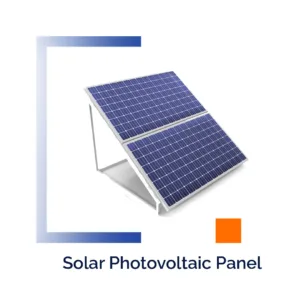 Solar Photovoltaic Panel: The solar photovoltaic panel or solar panel, is a device that converts sunlight into electricity. It is essentially made up of multiple solar cells. The cells harness and absorb sunlight to generate direct current (DC) electricity. Consequently, electrical power is used to power homes, businesses, and other applications. Moreover, it can be used directly or stored in batteries for later use.
Solar Photovoltaic Panel: The solar photovoltaic panel or solar panel, is a device that converts sunlight into electricity. It is essentially made up of multiple solar cells. The cells harness and absorb sunlight to generate direct current (DC) electricity. Consequently, electrical power is used to power homes, businesses, and other applications. Moreover, it can be used directly or stored in batteries for later use.
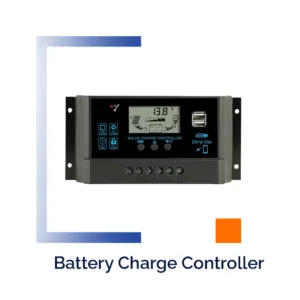 Battery Charge Controller: A battery charge controller regulates the voltage and current generated from solar panels to charge the battery. Moreover, the device ensures that the battery is charged efficiently. Consequently, it stops overcharging or undercharging and ensures the longevity of the battery.
Battery Charge Controller: A battery charge controller regulates the voltage and current generated from solar panels to charge the battery. Moreover, the device ensures that the battery is charged efficiently. Consequently, it stops overcharging or undercharging and ensures the longevity of the battery.
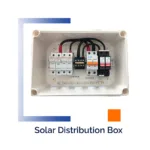 Solar Distribution Box: These are safety devices that allow the system to be shut down in case of emergencies. This component has disconnect switches or breakers to help isolate the solar panels, inverters, and batteries from the entire electrical system. Therefore, the component ensures the safety of technicians working on the system or during any emergencies.
Solar Distribution Box: These are safety devices that allow the system to be shut down in case of emergencies. This component has disconnect switches or breakers to help isolate the solar panels, inverters, and batteries from the entire electrical system. Therefore, the component ensures the safety of technicians working on the system or during any emergencies.
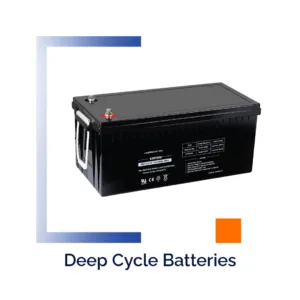 Deep Cycle Batteries: Deep cycle batteries are designed to be regularly deeply discharged using most of their capacity. They are regularly used in renewable energy systems, like solar power. Thus they help to store the energy. Moreover, deep-cycle batteries have thicker plates and are more robust. Therefore, they can withstand repeated deep discharges and recharges.
Deep Cycle Batteries: Deep cycle batteries are designed to be regularly deeply discharged using most of their capacity. They are regularly used in renewable energy systems, like solar power. Thus they help to store the energy. Moreover, deep-cycle batteries have thicker plates and are more robust. Therefore, they can withstand repeated deep discharges and recharges.
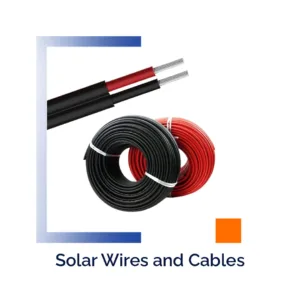 Solar Wires and Cables: Solar wires and cables connect solar panels to the rest of the solar power system. Moreover, they are made of materials that are suitable for outdoor conditions, such as sunlight, heat, and moisture. Also, they play a crucial role in transferring the electricity generated by the solar panels to the charge controller, battery bank, and inverter. Therefore, ensuring the smooth functioning of the system
Solar Wires and Cables: Solar wires and cables connect solar panels to the rest of the solar power system. Moreover, they are made of materials that are suitable for outdoor conditions, such as sunlight, heat, and moisture. Also, they play a crucial role in transferring the electricity generated by the solar panels to the charge controller, battery bank, and inverter. Therefore, ensuring the smooth functioning of the system
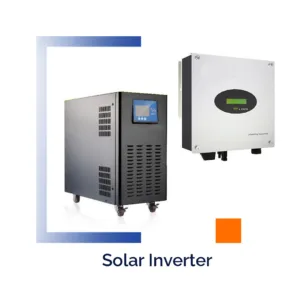 Solar Inverter: A solar power system inverter helps to convert the direct current (DC) electricity generated by solar panels into alternating current (AC) electricity. Therefore, it can be used to power household appliances and other electrical devices. This crucial component of a solar power system also manages the flow of electricity between the solar panels, batteries and the electrical grid. Therefore, ensuring that the system operates efficiently.
Solar Inverter: A solar power system inverter helps to convert the direct current (DC) electricity generated by solar panels into alternating current (AC) electricity. Therefore, it can be used to power household appliances and other electrical devices. This crucial component of a solar power system also manages the flow of electricity between the solar panels, batteries and the electrical grid. Therefore, ensuring that the system operates efficiently.
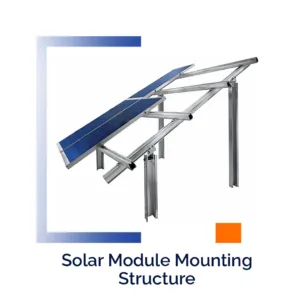 Solar Module Mounting Structure: Panel frames and steel structure components provide support and stability to solar panel installations. The frames in the Panel are made of aluminium or steel. Moreover, they are suitably designed to hold the solar panels in place. Also, the steel structures help mount the solar panels on rooftops or the ground. Also, the components can withstand the weight of the solar panels and any harsh environmental factors.
Solar Module Mounting Structure: Panel frames and steel structure components provide support and stability to solar panel installations. The frames in the Panel are made of aluminium or steel. Moreover, they are suitably designed to hold the solar panels in place. Also, the steel structures help mount the solar panels on rooftops or the ground. Also, the components can withstand the weight of the solar panels and any harsh environmental factors.
Top Benefits of Rooftop Solar Panels
Rooftop Solar panels are increasingly being adopted by many industrialists and households in India. Also, recognizing the potential of solar power generation, the Ministry of New and Renewable Energy (MNRE) has targeted achieving 40 GW of rooftop solar power through the National Solar Mission of India. (source- pib.gov.in).
Here is a look at the benefits:
1. Cost Savings:
Rooftop solar panel installations offer significant savings for residences. The tariff rates are cheaper than the industrial and commercial tariff rates. Additionally, many governments offer incentives and rebates for installing solar panels, further reducing the overall cost.
2. Secure Investment:
Consistency in the price of power generation by solar rooftops provides a secure investment. as the cost of generating electricity can be easily calculated. Thus, individuals can calculate the cost of generating electricity in advance. The system offers stability and predictability.
3. Increased Access to Energy:
It is a cost-effective source of electricity compared to unreliable power supply. Power sources like diesel generators are expensive and cause harm to health and the environment. Therefore, Rooftop solar panels are a sustainable solution. Also, it can reduce operating costs and offer consistent access to electricity.
4. Reduced Carbon Footprints:
Solar panels can significantly reduce carbon footprints compared to traditional energy sources. They harness the energy from the sunlight and emit fewer harmful gases. Therefore, rooftop solar systems are environmentally friendly and an effective source of clean energy.
5. Low Maintenance Cost:
With a lifespan exceeding 20 years, Rooftop solar panels require minimal maintenance. Therefore, they are extremely cost-effective and reliable long-term investments.
6. Perfect for India:
Rooftop solar panels could be the best choice for energy sources in India as the region is geographically well-suited for solar energy. The country receives over 300 bright days and clear skies each year. Therefore, solar power can be a particularly viable option for the country.
7. Easy Installation:
Solar rooftop panel systems are easy to install on the roofs of both commercial and residential buildings. Moreover, they need minimal land or space. This makes them practical, sustainable solutions and also adds to the resale value of a property.
Rooftop Solar Panels Installation Process
The installation process of rooftop solar panels involves six consecutive steps. Here is a simple breakdown:
- Site Assessment: The process begins with an installer visiting your property to assess its suitability for solar panels.
- Mount Installation: The installer starts by placing brackets on the roof to hold the solar panels securely. The professional will consider the installation orientation of the panels for optimal energy absorption.
- Solar Panel Installation and Electrical Wiring: The installer then fixes the solar panels onto the brackets using connectors like MC4. Also, the wiring can be done in two ways: series or parallel.
- Connecting the Components: Now, comes the connecting of the solar panels to the inverter. Here, the inverter is connected to the solar cell input and the grid to generate electricity.
- Starting the Solar Inverter: Finally, the inverter switch of the building is turned on.
- Inspection and Interconnection: The process is completed after inspection of the solar energy system to ensure it meets safety and performance standards.
Factors Influencing Rooftop Solar Panels Installations Cost
The rooftop solar panel installation pricing may depend on various factors depending on types, capacity and installation complexity among others. Here is a look into the factors:
- Solar Panel Efficiency and Type: The overall cost of installation is largely dependent on the efficiency of solar panels. Therefore, panels with higher efficiency are more expensive. However, they generate more electricity in a limited space. The average cost of 1 kW solar panels can range from INR 37,500 to INR 42,000, depending on the wattage and type.
- System Capacity: The energy needs of the home determine the size of the solar power system. Therefore, be ready to pay more for larger systems with higher capacities.
- Inverter Type: Inverter type has a direct bearing on the overall cost with micro-inverters being more expensive than string inverters. In India, the cost of inverters ranges from INR 20,000 to INR 80,000 depending on the type and capacity.
- Mounting Structures and Installation Complexity: Installation costs also depend on the mounting structure and the complexity of installation. Therefore, complex Ground-mounted systems are more expensive than Solar rooftop installations. Also, the overall cost can range from INR 10,000 to INR 50,000.
- Quality of Components: Good quality solar panels, inverters, batteries, and other system components add to the initial cost. However, the outcome is better efficiency and durability. Hence, there can be a cost difference for high-quality components with an increase of 10% to 30%.
- Government Subsidies and Incentives: Government subsidies substantially reduce the overall cost of installation. The recently announced solar rooftop subsidy scheme by govt. of India can cover 20% to 70% of the total cost.
- Installation Charges: Choosing a professional installer can lower installation charges covering labour, equipment, and associated costs. Also, installation charges can range from INR 20,000 to INR 1 lakh.
- Solar Panel Efficiency and Type: The overall cost of installation is largely dependent on the efficiency of solar panels. Therefore, panels with higher efficiency are more expensive. However, they generate more electricity in a limited space. The average cost of 1 kW solar panels can range from INR 37,500 to INR 42,000, depending on the wattage and type.
Conclusion
We hope that this informative blog has provided you with valuable insights into the world of rooftop solar panels. From the numerous benefits they offer to the important considerations involved in the installation process, we’ve covered it all. Use this as your guide to understanding the incredible potential of harnessing the sun’s energy right from your rooftop.
At Prabha Power, we are committed to offering sustainable and cost-effective energy solutions for residential and commercial properties alike. Our rooftop solar panels are designed to provide you with a reliable source of clean energy, reducing your carbon footprint and saving you money on your electricity bills. With technological advancements and decreasing costs, solar energy has become more accessible than ever before, empowering homeowners and businesses to make a positive impact on the environment.
If you’re looking for Rooftop Solar Panels in Guwahati to embrace a greener future, connect with our team at Prabha Power. We simplify the process by connecting you with the best brands and guiding you through every step of the way. Don’t hesitate to reach out to us at +91 9394879486 for any queries or insights. Together, let’s take a step towards a more sustainable tomorrow with rooftop solar panels.
